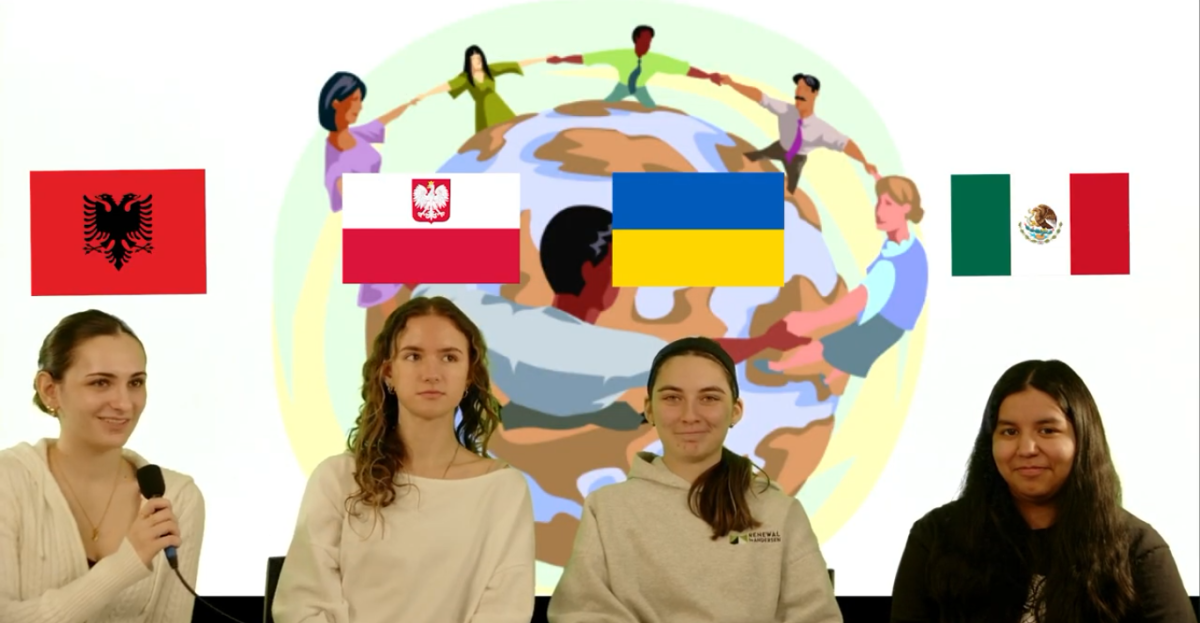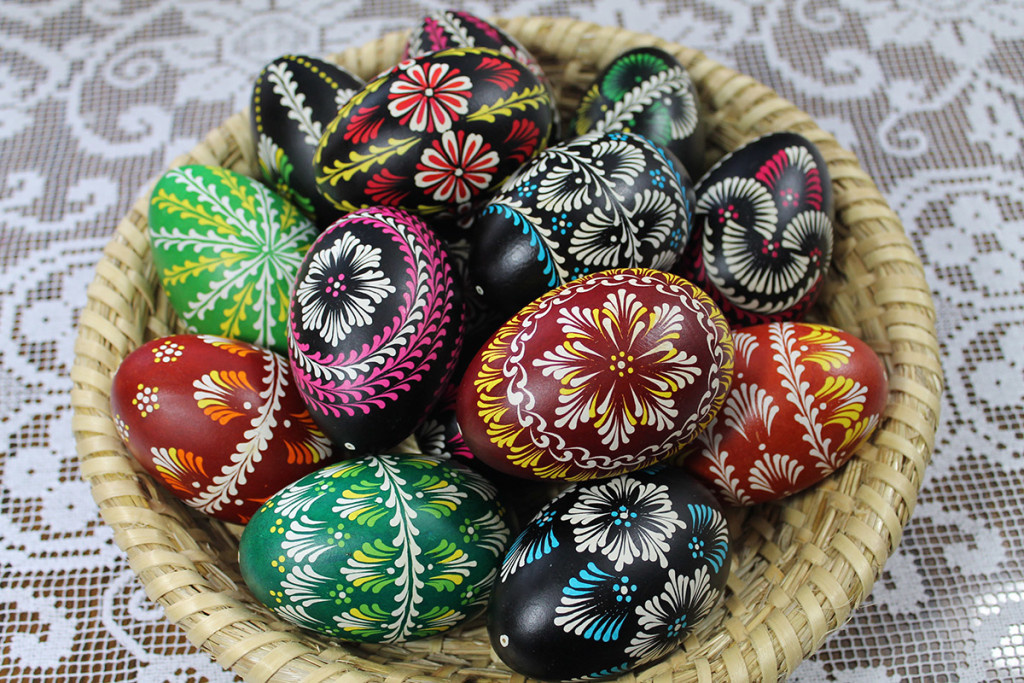Święconka (Blessing of the Easter Baskets): On Holy Saturday, families bring baskets filled with traditional Easter foods to church to be blessed by the priest. These baskets typically include eggs (often decorated), bread, ham, sausage, salt, and a lamb-shaped cake called “baranek wielkanocny”.
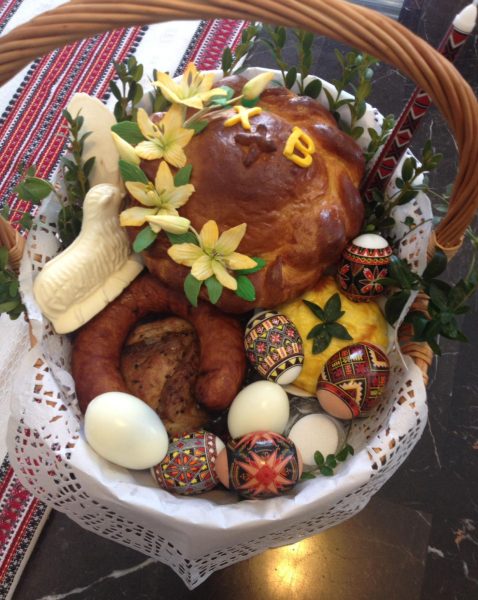
Easter Sunday Mass: Many polish people attend a special Easter Sunday Mass to celebrate the resurrection of Jesus Christ. The Mass is often followed by a festive meal with family and friends.
“Niedziela Palmowa” is the Polish term for Palm Sunday, which is the Sunday before Easter and marks the beginning of Holy Week in the Christian calendar. “Niedziela” means Sunday, and “Palmowa” refers to palms. Palm Sunday commemorates Jesus Christ’s triumphal entry into Jerusalem, as described in the Gospels.
Easter Breakfast: The Easter Sunday breakfast is a special meal that includes the blessed foods from the Święconka basket. The basket typically features a variety of dishes such as scrambled eggs, cold cuts, horseradish, and Easter pastries like “babka”, a rich yeast cake and “mazurek”, a type of shortbread or pastry.
Easter Monday: Śmigus-Dyngus (Wet Monday): This is a fun and playful tradition where people playfully sprinkle or drench each other with water. It is believed to bring good luck and fertility for the upcoming year.
Easter Egg Decorating: Polish families engage in decorating eggs, often using traditional methods such as boiling eggs with onion skins to create natural dyes, or using intricate designs with wax, a technique called “pisanki”.
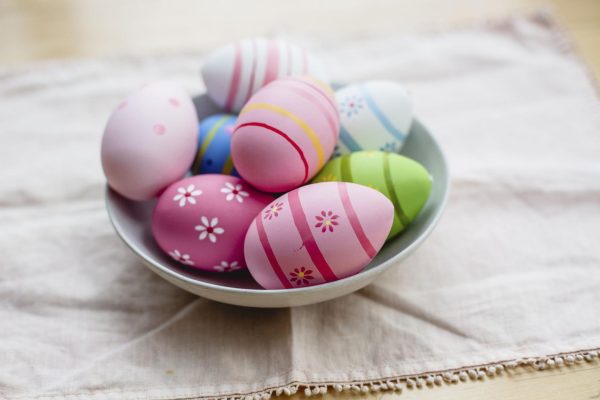
Easter Decorations: Homes and churches are decorated with spring flowers, greenery, and Easter-themed decorations such as: colorful eggs, Easter bunnies, and religious symbols.
“Niedziela Palmowa” is the Polish term for Palm Sunday, which is the Sunday before Easter and marks the beginning of Holy Week in the Christian calendar. “Niedziela” means Sunday, and “Palmowa” refers to palms. Palm Sunday commemorates Jesus Christ’s triumphal entry into Jerusalem, as described in the Gospels.
In Poland, Niedziela Palmowa is celebrated with several traditions:
Blessing of Palms: Polish Catholics bring palm branches or other greenery to church to be blessed by the priest. These blessed palms are then taken home and often displayed in houses or kept as a symbol of protection and blessings.
Palms and Decorations: Palms are intricately woven into various shapes, such as crosses, loops, or elaborate designs, symbolizing victory and resurrection. Some regions in Poland use Salix discolor branches, part of the willow tree, instead of palms, especially in areas where palms are not readily available.
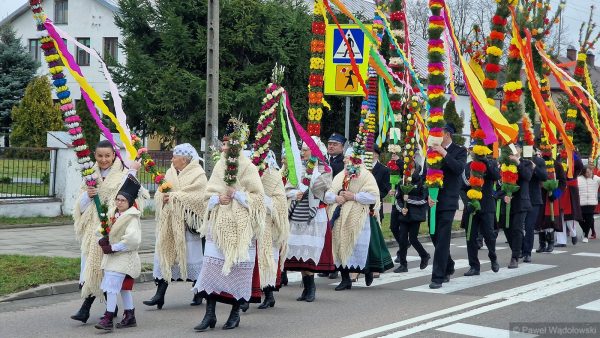
Processions: In many Polish towns and villages, there are processions with people carrying palms and singing hymns as they reenact Jesus’ entry into Jerusalem. This tradition is particularly vibrant in places like Lipnica Murowana, known for its elaborate palm decorations and competitions.
Palm Sunday Mass: Special Masses are held on Palm Sunday, where the Gospel readings recount Jesus’ entry into Jerusalem, and the blessings of palms take place.
Easter Market: In some areas, there are Easter markets or fairs held on Palm Sunday, featuring traditional crafts, food, and entertainment.
The Holy Week preceding Easter involves spring cleaning. In the countryside, people would use the occasion to repaint their barns. Religious fasts are sometimes observed in varying degrees of strictness. Families visit representations of the tomb of Christ, often decorated in a spectacular fashion for the occasion.
















